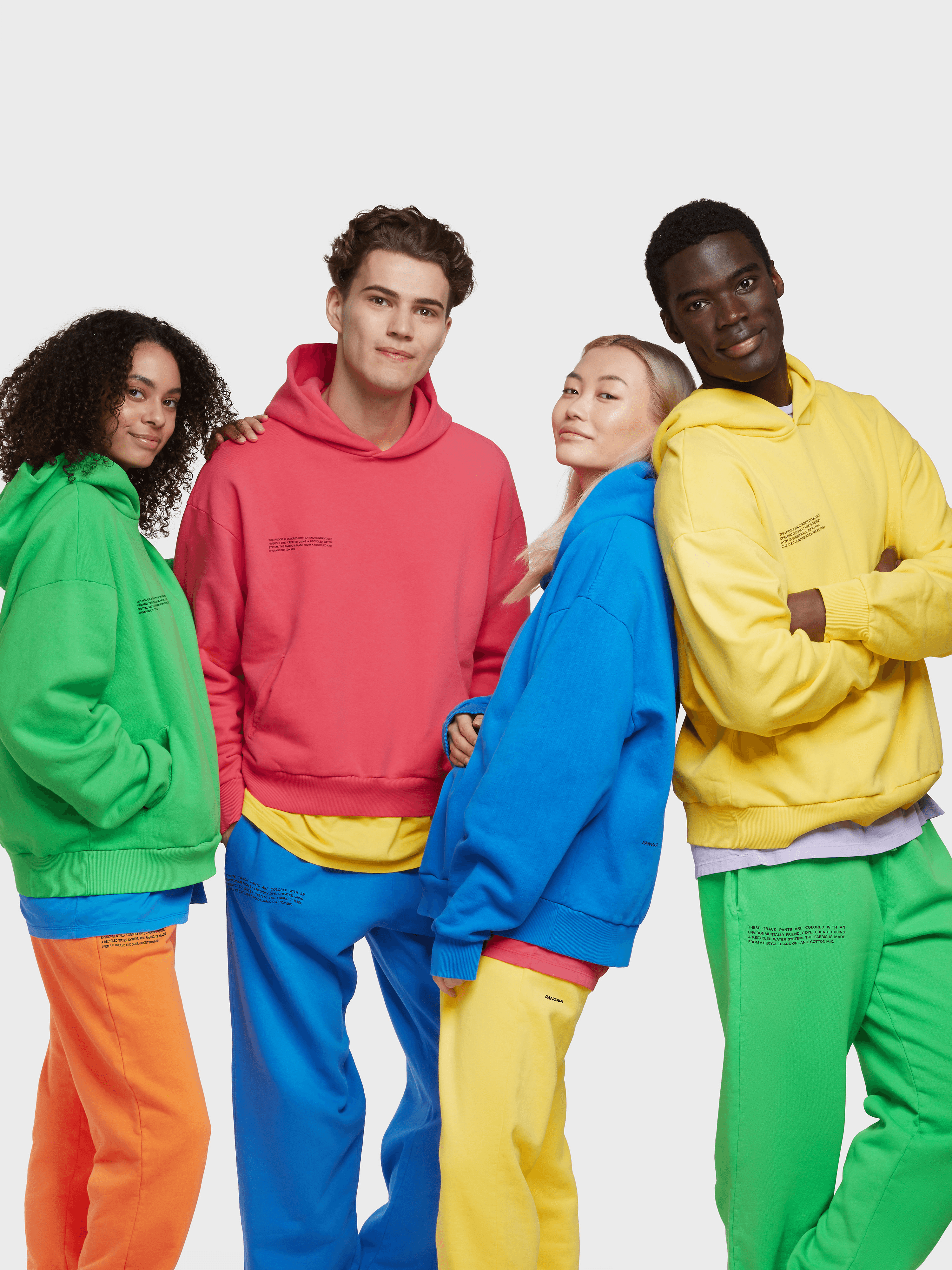Identifying your brand's purpose with precision
Understanding your audience is the first step in crafting a purpose-driven approach. Utilize tools like GA4, social media analytics, and big data solutions such as Criteo to pinpoint what drives engagement and loyalty among your customers.
Pangaia recognizes the growing consumer trend toward purpose-driven brands. They utilize market research and consumer insights to understand the values that resonate with their audience. For instance, research studies indicate that a significant percentage of consumers are willing to pay more for products from brands that demonstrate a commitment to social and environmental responsibility. Pangaia effectively communicates its sustainability initiatives, aligning its offerings with the values of conscious consumers.
Employee growth at Pangaia also serves as social proof, showing that more and more people want to work for a company that’s making a positive impact on the environment.

Integrate Purpose Into Your Business: Understand Your Audience, the Future Generation
Purpose-driven marketing should be woven into the fabric of your operations. Whether it’s sustainable product development or ethical business practices, your actions should reflect your commitment to your brand’s purpose. Brands that integrate purpose into every aspect of their operations create stronger connections with consumers who share similar values.
Pangaia, a materials science company, has positioned itself at the intersection of nature and technology to create innovative, eco-friendly products. The company’s mission is to provide sustainable, high-performance materials, aiming to reduce the environmental impact of the fashion industry. Pangaia’s marketing efforts emphasize their commitment to sustainability, including the use of natural materials like seaweed fiber and recycled plastics (Pangaia, 2025). The company also focuses on "circular" fashion, incorporating biodegradable materials to ensure products leave a minimal carbon footprint.
By highlighting their innovative approach to sustainable fashion, Pangaia appeals to conscious consumers who prioritize ethical and environmentally-friendly choices. Their products not only embody these values but also become a tool for consumers to express their commitment to sustainability. Pangaia’s philosophy is clear - Miroslava Duma, the founder of Pangaia, has articulated the company's mission clearly: “Our mission is to design an earth-positive business model,” emphasizing that every product should be better for the planet than if it did not exist. She also highlights the importance of innovation in sustainable fashion, stating, “We can’t suddenly stop producing. People need jobs and an income – that’s how today’s economy works”.

Communicating your purpose: Transparency is key
Once you've defined and embedded your purpose, it's crucial to communicate it clearly and honestly. Share impactful stories and transparently report on your contributions to build trust and engage your audience.
Stripe's Commitment to Carbon Removal
At Sapiens Growth Agency, we admire Stripe for its dedication to environmental sustainability. Stripe has committed to donating 1% of its revenue to carbon removal initiatives through its Stripe Climate program. This initiative supports the development and scaling of permanent carbon removal technologies, aiming to mitigate climate change.
TOMS' Evolution of the "One for One" Model
Another example is the "One for One" model" by a footwear brand TOMS donates a product for every one sold, initially providing shoes to children in developing countries. Despite donating over 94 million pairs, the model faced criticism for potentially harming local economies by providing free goods, which can disrupt local markets and businesses. Critics argue that such donations may not address the root causes of poverty and could lead to dependency rather than sustainable solutions. In response to these concerns, TOMS has evolved its strategy, shift to supporting local manufacturing to promote sustainable development.
The concept of giving back became central to many brands' marketing strategies, inspiring companies like Warby Parker to adopt similar models.
Warby Parker, the eyewear brand, also integrated a giving back philosophy into its business model. With its "Buy a Pair, Give a Pair" campaign, the company has distributed millions of pairs of glasses to people in need around the world. The brand’s CSR initiative aligns with TOMS’ ethos, showing that businesses can thrive while making a positive impact on society.
While the "One for One" model and similar initiatives have been praised for their generosity, they have also faced criticism regarding their long-term sustainability. Critics argue that these approaches can disrupt local markets and create dependency, as they provide free goods without addressing the underlying issues such as infrastructure, education, and economic development. In response, brands like TOMS have evolved their strategies to incorporate local sourcing, entrepreneurial support, and community empowerment to create more sustainable solutions that go beyond mere donation.
This shift demonstrates how brands can use their platforms to contribute to solving societal problems while ensuring that their actions are not inadvertently harming the very communities they seek to support.
Sources:
"One for One: The Impact and Evolution of TOMS' CSR Model," Knowledge@Wharton. Link
"How Warby Parker’s Giving Campaign Has Changed the Eyewear Industry," The Guardian. Link
Measuring the success of your purpose-driven Initiatives
To gauge the effectiveness of your purpose-driven efforts, set clear goals and track them with Key Performance Indicators (KPIs). Metrics such as brand recognition, customer loyalty, and social impact assessments will help you refine your strategy over time. Regularly reviewing these metrics ensures that your initiatives align with your brand's purpose and resonate with your audience.
For example, at Sapiens Growth Agency, we donate 1% of our revenue through Stripe (note that not all of our revenue is processed via Stripe) to support Stripe's carbon removal initiatives and help offset emissions.






